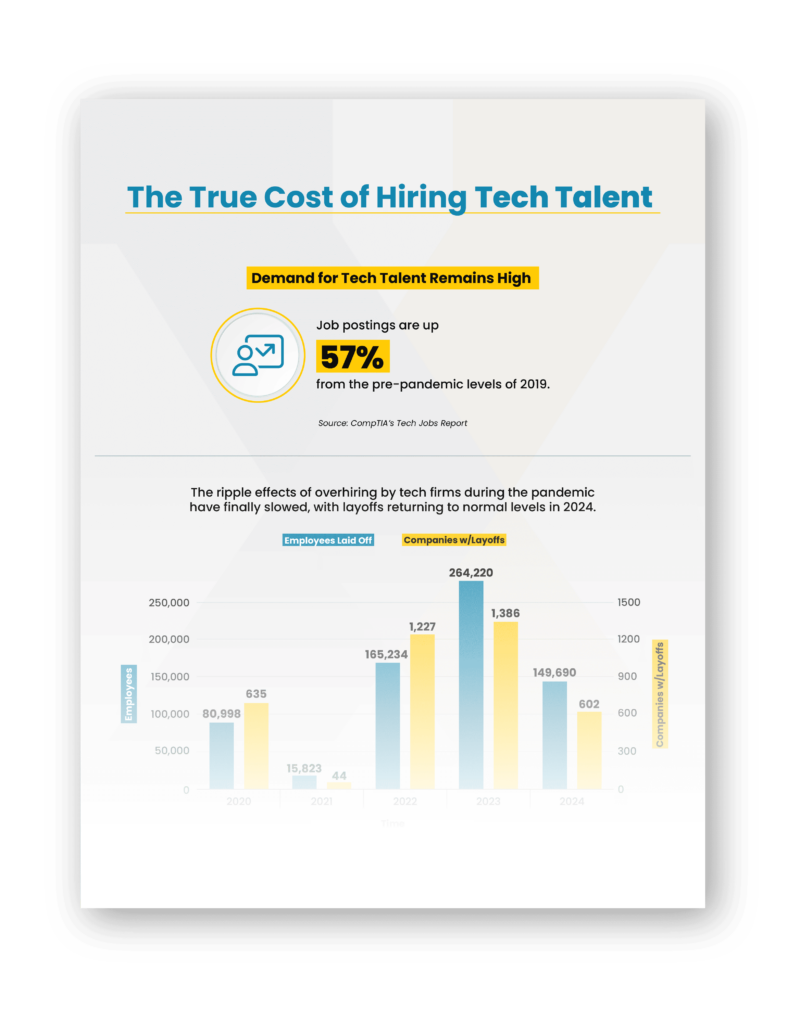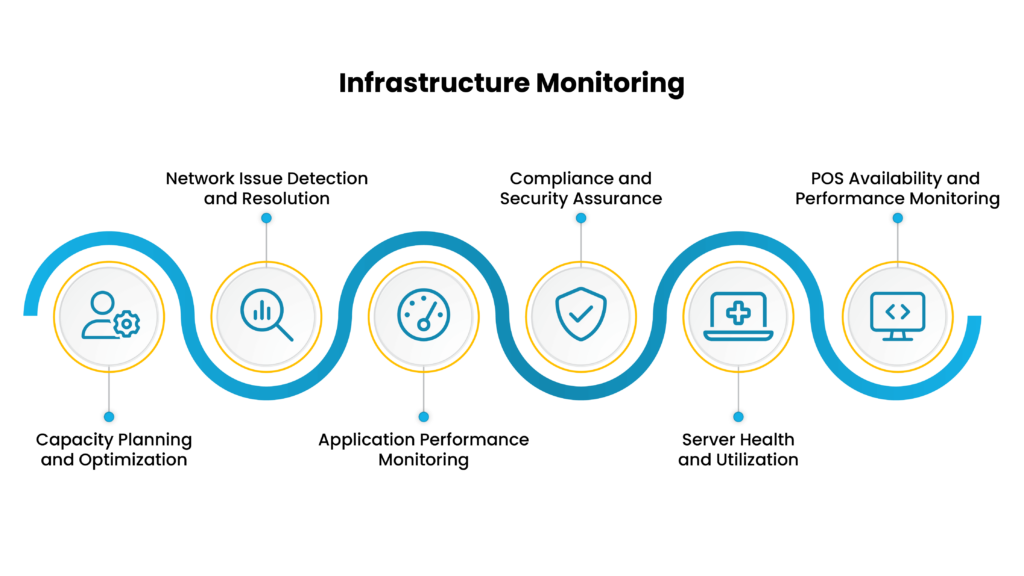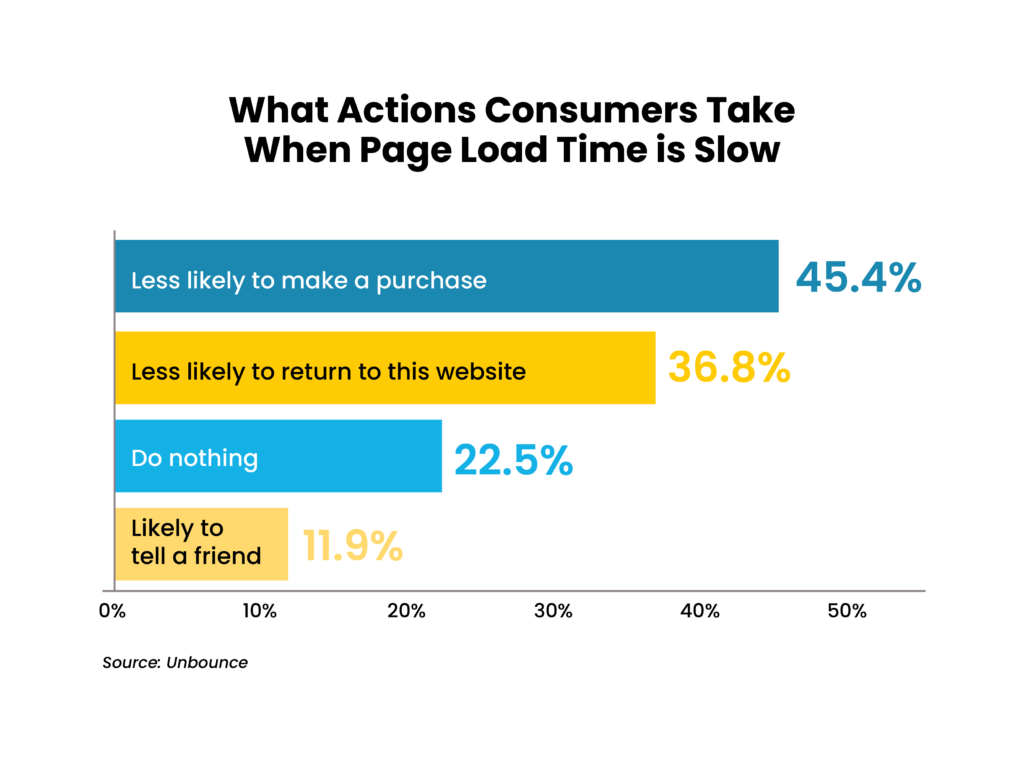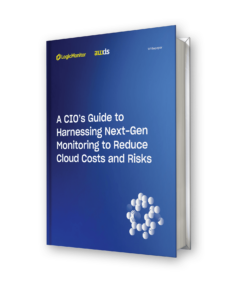In brief:
- Modern retail organizations are heavily reliant on IT infrastructure to support seamless in-store, e-commerce, and backend operations.
- An IT outage can cripple sales, and consistently bad experiences can lead to loss of customer loyalty.
- Next-gen infrastructure monitoring, or infrastructure observability, spots performance issues in real-time, proactively addresses common issues and trends, and uses intelligent forecasting to help future-proof the business.
The retail and restaurant industry has increasingly integrated technology and network connectivity to improve operations and fend off macroeconomic challenges such as rising labor costs and tighter consumer spending.
From Point of Sale (POS) devices, contactless payment solutions, self-checkout counters, and general store network infrastructure and connectivity to online ordering platforms, digital reservation and waitlist management, and e-commerce portals and apps, technology has become the lifeblood of modern retail experiences – driving seamless in-store, e-commerce, and backend operations. This has made effective infrastructure performance monitoring critical for continuity of business and to avoid loss of customer loyalty and sales.
Retail/consumer organizations suffer the third-highest IT outage frequency across industries, with nearly 40% reporting outages at least once per week, New Relic’s 2023 State of Observability for Retail report found. Outages are also 25% more expensive for retailers than other businesses, coming in at an average annual cost of $9.95 million – compared to $7.75 million across all industries.
Unfortunately, customer satisfaction can easily become a casualty in such circumstances: a whopping 73% of consumers say they will abandon a brand they once felt loyal to after a single bad experience, a TCN Consumer Survey found.
Next-gen infrastructure monitoring tools collect and analyze data from IT infrastructure, systems, and processes, and use that to inform and optimize management of your technology environment – proactively addressing issues before they become business-impacting events. Let’s examine four key benefits of IT infrastructure monitoring that helps ensure “always on” technology in the retail industry.

What is next-gen IT infrastructure monitoring?
While IT infrastructure monitoring previously focused on servers and network devices, it is today complicated by the need to monitor virtualized environments, cloud infrastructure, microservices, and more. Consequently, IT teams at many retailers find themselves struggling with manual processes and multiple tools to monitor an ever-evolving tech environment.
Nearly 40% of organizations juggle 11 to 30 monitoring tools to keep an eye on their application, infrastructure, and cloud environments – with 8% using between 21 and 30 tools, according to a recent Sumo Logic report. Such tool sprawl results in poor end-to-end visibility, delayed detection of outages, higher outage costs, and poor customer experiences.
The multi-location element of retail and restaurants – as well as other industries including auto dealerships, hotels, etc. – adds another layer of complexity to monitoring.
Besides the unique configurations and technology setups of retail IT infrastructure that often exist at different stores within a brand, locations spread across different regions or countries face varying network conditions and regulatory requirements. Franchised stores may also use third-party IT service providers while corporate stores rely on in-house teams, making standardized monitoring difficult.
Such complex retail monitoring needs call for a unified solution that uses next-gen technology like AI and automation to collect, correlate and put into context your end-to-end infrastructure data – also known as observability.
Next-gen cloud-based observability platforms like LogicMonitor create a single view of all the technology in your environment – providing comprehensive assessments and insights into IT assets like networks, servers, and cloud systems; operational technology like POS and CRM systems; and more. As a result, organizations can troubleshoot and optimize all their systems as a whole, spot performance issues in real-time, proactively address common issues and trends, and use intelligent forecasting to future-proof the business with forward-thinking recommendations.

4 key benefits of an infrastructure observability solution in the retail industry
Gartner expects 30% of organizations to adopt observability solutions by the end of 2024, up from less than 10% in 2020. Here’s how next-gen infrastructure monitoring enables seamless infrastructure performance and endless scalability for growth:
1. A single view of your tech landscape offers better IT and business insights
Nearly 90% of retail respondents to Dynatrace’s 2024 State of Observability report said the complexity of their technology stack hampers their ability to provide an outstanding customer experience. The biggest reason: an inability to keep up with the volumes of data being created or to generate insights which can help optimize customer experiences, the report found.
Deploying multiple infrastructure monitoring tools adds to the complexity, leading to data silos and “alert storms,” where different tools generate alerts for the same issue. Such issues overwhelm IT teams and make it difficult to identify and address critical issues effectively.
Multiple monitoring tools also force IT teams to remain reactive when dealing with outages and other incidents as they provide fragmented visibility into issues and hinder collaboration, leading to duplication of effort and wasted time. Multiple monitoring tools also make it increasingly challenging to scale monitoring to accommodate growth.
A comprehensive view of complicated technology stacks is critical for retail stakeholders including CIOs, IT managers, and cybersecurity specialists to enable informed business decisions and proactive resolution of issues before they turn into bigger problems. Creating successful digital storefront experiences, managing supply chain disruptions, keeping customers engaged, ensuring website reliability and uptime on high-traffic days like Cyber Monday – all these require the business to have visibility into global IT activities and in-store IT assets.
2. Faster issue resolution for greater uptime and system reliability
The reliability and availability of technology assets like POS and inventory management systems are essential to provide a smooth shopping experience at retail stores. Yet, more than half of retail organizations reported that it takes at least 30 minutes to detect IT outages with high business impact, the New Relic report found.
Online customer experiences and brand engagement are also affected by factors such as website and/or app load and response times, smooth checkout processes, ease of navigation and search, and more. Most often, delays in load time or checkout are caused by poor server performance, ineffective tracking of capacity utilization, or lack of planning for demand – creating poor shopping experiences that risk loss of customers.
Nearly 70% of consumers say page speed impacts their willingness to buy from an online retailer, Unbounce found, while more than half of visitors will leave a page if they’re forced to wait longer than three seconds.

A next-gen monitoring system not only helps detect issues before they cause outages, but also provides visibility into your systems so you can understand and optimize day-to-day infrastructure performance.
3. Greater retail cybersecurity against attacks
Retail ranks as the number one target for cybercriminals, experiencing more breaches than any other industry due to the sensitive customer and financial data they store. Massive data breaches suffered by Home Depot, eBay, Target, and others in the last decade allowed attackers to gain possession of millions of payment card records and user information.
Such attacks carry a heavy price. The average cost of a data breach for a retail enterprise in 2023: $2.96 million, IBM’s Cost of a Data Breach report found.
The need for greater retail cybersecurity makes it critical to have robust IT security measures and tools that detect threats in real-time, prevent unauthorized access, and protect end-user data. An effective infrastructure monitoring platform can play a key role:
- Host monitoring provides data about the performance, stability, and overall health of hardware including laptops, desktops, and servers.
- Network monitoring scans and analyzes your network and alerts if new devices or potentially malicious domains show up, inspects encrypted traffic for potential malware or phishing attacks, and analyzes traffic patterns to identify anomalies.
- System monitoring analyzes system-level activities, configurations, and events to detect and respond to security threats and vulnerabilities. These include tools to monitor and provide real-time visibility into endpoints such as desktops, laptops, and servers for suspicious activities and behaviors; log management which collects and analyzes logs from operating systems, applications, and security devices for security events and anomalies; and vulnerability and patch management solutions.
4. Significant cost savings
A store loses approximately $855 per hour when a POS device goes down, according to a Retail Touchpoints survey.
Infrastructure observability platforms reduce resolution times with day-to-day performance monitoring and real-time detection of issues before they escalate into costly downtime, outages, or reputational damage.
Next-gen solutions integrate automation and AI for comprehensive and continuous monitoring and auto-remediation. AI-powered automation also delivers correlation, context, and clarity into the cause of complex IT incidents that are typically difficult to diagnose and resolve quickly as they involve multiple interconnected systems, network devices, infrastructure components, or processes.
Reducing operational costs is another important benefit, helping IT staff protect profit margins by optimizing resource allocation and spending. Next-gen infrastructure monitoring tracks resource usage such as server capacity, network bandwidth, and storage in real time, diverting expenditures as necessary.
Sixty-five percent of organizations report Mean Time to Resolution (MTTR) of less than 30 minutes since adopting an observability solution, the New Relic report found. MTTR measures the average time it takes to resolve an incident from the moment it is reported.
As a result, organizations with full-stack observability have 37% lower outage costs on average than those without, the report states.
Why Auxis: Next-gen infrastructure monitoring tools, talent, and expertise
Investing in infrastructure monitoring can deliver significant rewards. New Relic’s research found that retailers gained $5 million in total value per year by investing in observability tools, with a minimum 2x median annual return on investment (ROI).
However, lack of time, expertise, and budget as well as indecision on selecting the right infrastructure monitoring tool often make it challenging for retailers to implement next-gen monitoring tools within their organization. IT talent shortages over the last few years have made many internal IT teams short-staffed, making it difficult to identify and address critical issues quickly and effectively.
An experienced IT infrastructure monitoring partner like Auxis brings tangible benefits for retail organizations. Leveraging LogicMonitor, a unified and AI-driven observability platform rated as one of the best infrastructure monitoring tools, Auxis offers unprecedented visibility and intelligence into every part of your IT environment, without a big upfront technology investment.
Clients benefit from instant access to 24/7 monitoring, automated alerts, best-in-class processes, and proactive support. Auxis’ nearshore delivery model also solves IT labor shortages with top-notch engineers in your time zone, capable of managing your retail tech stack’s configurations and support at a significantly lower cost.
With scalable, next-gen monitoring tailored to the unique needs and challenges of the retail industry, Auxis ensures high performance and availability from mission-critical systems and services – ensuring quality customer experiences.
Want to learn more about how IT infrastructure monitoring solutions can benefit your organization? Schedule a consultation with our IT infrastructure monitoring experts today! You can also visit our resource center for more IT outsourcing tips, strategies, and success stories.




